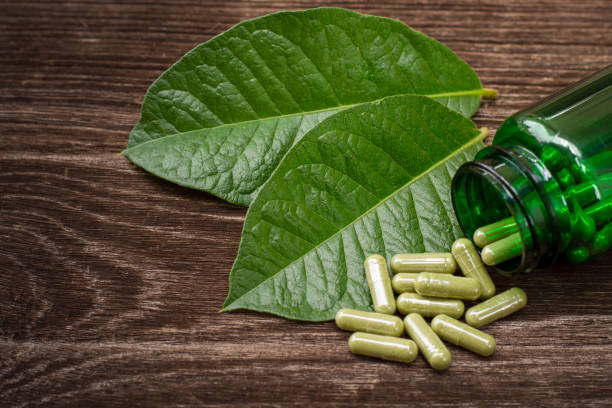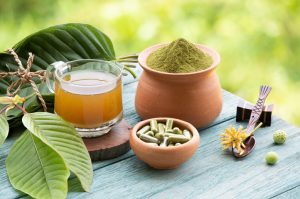Kratom powder is made from tropical evergreen tree leaves Mitragyna speciosa. Kratom is a stimulant in small doses. It relieves pain and lifts your mood when taken in larger doses.
Why kratom powder causes nausea?
- Kratom contains alkaloids, including mitragynine and 7-hydroxy mitragynine. Alkaloids interact with opioid receptors in your brain and gastrointestinal tract, causing nausea.
- Higher doses lead to more alkaloids binding to these receptors, increasing nausea. Some people are more sensitive to the effects.
- The taste and texture of the powder itself also contribute. Kratom is quite bitter with a gritty consistency that is unpleasant to ingest.
Simple ways to reduce kratom nausea
Here are some tips to help prevent or decrease nausea from kratom powder:
- Start with a low dose
When using a new batch of kratom powder, start with a very small dose – 1 to 2 grams. This allows you to assess its potency and your tolerance. Taking too large a dose right away increases your risk of queasiness. You gradually increase your dose as needed.
- Stay hydrated
Drink plenty of water before, during, and after taking kratom powder. Dehydration exacerbates nausea while staying well-hydrated helps minimize it. Aim for 8 glasses of fluid daily as a goal. Flavored seltzer water or herbal tea also make good options.
- Take with food
Ingest your kratom dose after a light meal or snack. Having food in your stomach helps buffer the effects of kratom, preventing stomach upset. Yogurt, bananas, oatmeal, or rice cakes make easy options. Avoid taking kratom powder on an empty stomach whenever possible.
- Mix with juice
The bitter, gritty taste of kratom powder itself provokes nausea when swallowed. Mixing your powder dose thoroughly with fruit juice helps mask the unpleasant flavor, making it easier to ingest without gagging. Orange, apple, grapefruit, and cranberry juices help cut the bitterness.
- Avoid alcohol and caffeine
Both alcohol and caffeine worsen kratom-related nausea. Alcohol promotes acid secretion in your stomach, while caffeine boosts anxiety and jitteriness. Avoid drinking alcohol close to ingesting kratom powder. Limit or cut out caffeinated drinks when using kratom to lower nausea risk.
- Don’t take every day
Daily kratom use quickly leads to building up tolerance, requiring higher doses to be taken. This inevitably means worse side effects like nausea. Limit kratom powder to a few times per week maximum to give your body a break between doses. This keeps nausea at bay.
- Purchase high quality powder
Low-quality kratom powder likely contains contaminants and adulterants that exacerbate nausea and other side effects. Only buy pure lab-tested kratom powder from reputable, trusted vendors. It costs more but the cleaner powder will prove easier on your stomach.
- Adjust your dosage
Track what dose of kratom powder causes nausea for you. Then adjust your dosage downward by 1 to 1.5 grams next use. Also pay attention to which kratom strains most upset your stomach, as potency varies. Focus on milder strains.
- Use ginger
Ginger root is a time-tested nausea remedy. Drink some ginger tea 20 to 30 minutes before your kratom dose. You continue sipping ginger tea after ingesting it too. Ginger calms GI upset via compounds called gingerols and shogaols that soothe your gut. Ginger capsules, candies, and kombucha also work.


















